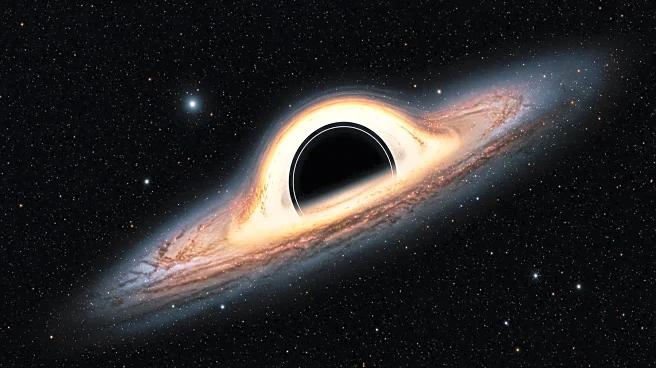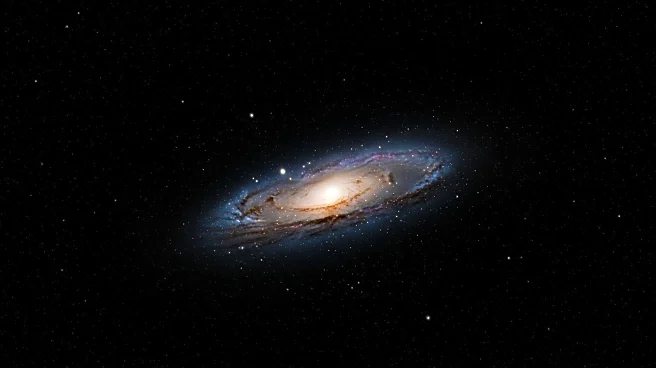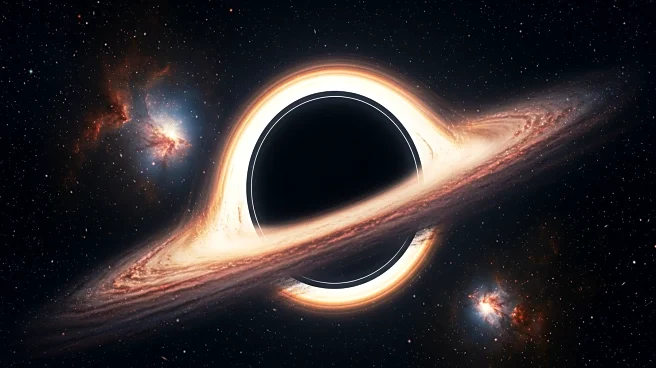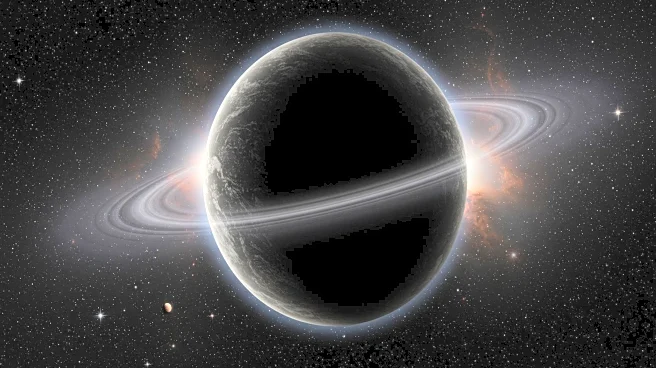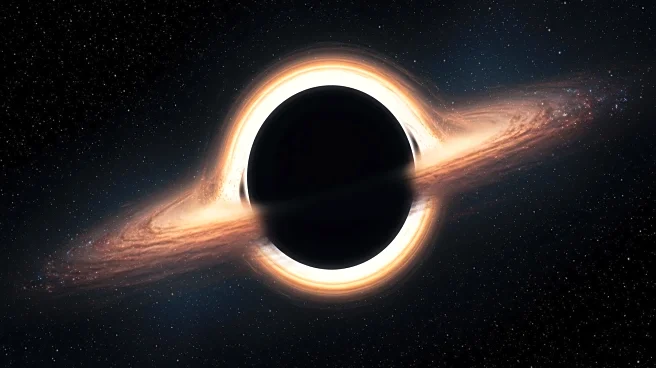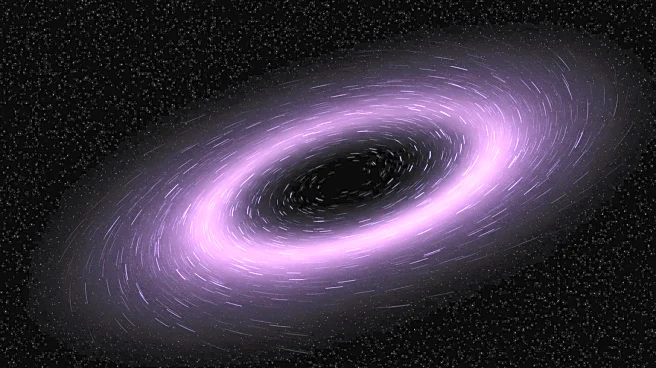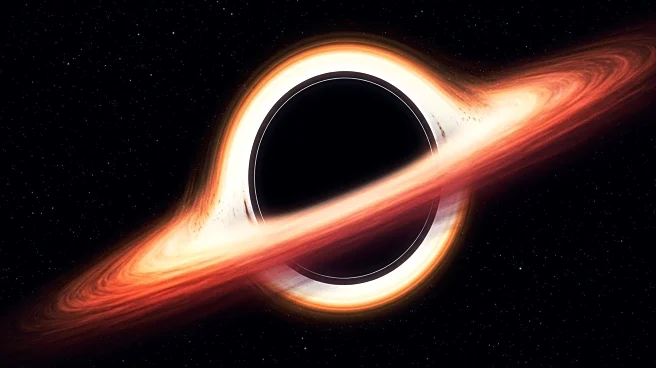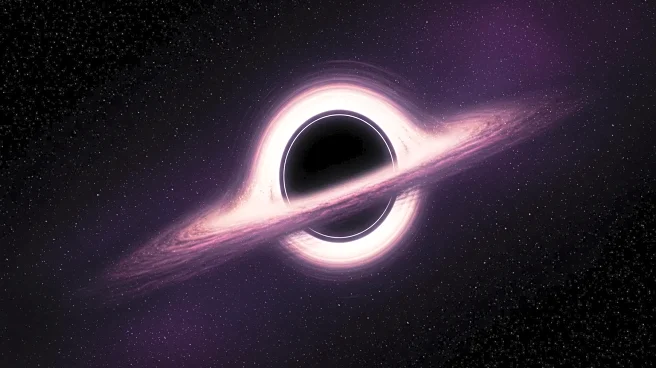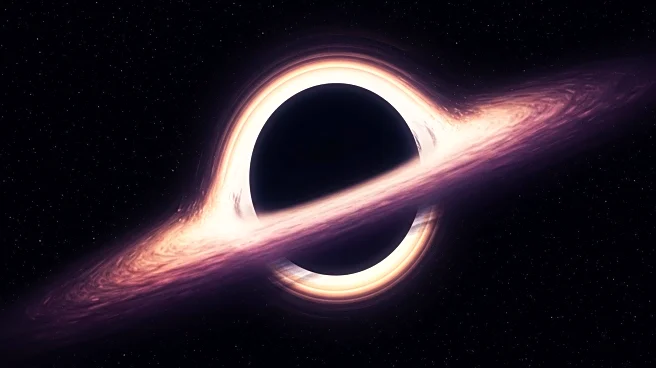What's Happening?
Researchers have identified a supermassive black hole within the Cosmic Horseshoe, estimated to be 36 billion times the mass of the sun. This discovery, made by the Institute of Cosmology and Gravitation at the University of Portsmouth and the Federal University of Rio Grande, suggests the black hole could be the result of a merger between two supermassive black holes. The Cosmic Horseshoe, a gravitational lens, allows scientists to study the mass and structure of this black hole.
Why It's Important?
The discovery of such a massive black hole provides valuable insights into galaxy formation and the dynamics of cosmic structures. It challenges existing models of black hole growth and offers a unique opportunity to study gravitational lensing effects. This finding could influence theories about the future interactions between galaxies, including the potential collision between the Milky Way and Andromeda.
What's Next?
Further observations and studies are needed to confirm the mass and characteristics of this black hole. Researchers may use advanced telescopes and computational models to explore the implications of this discovery on galaxy evolution and cosmic phenomena.
Beyond the Headlines
The study of massive black holes like the one in the Cosmic Horseshoe raises questions about the limits of observational astronomy and the potential for undiscovered cosmic phenomena. It highlights the importance of international collaboration in advancing our understanding of the universe.
